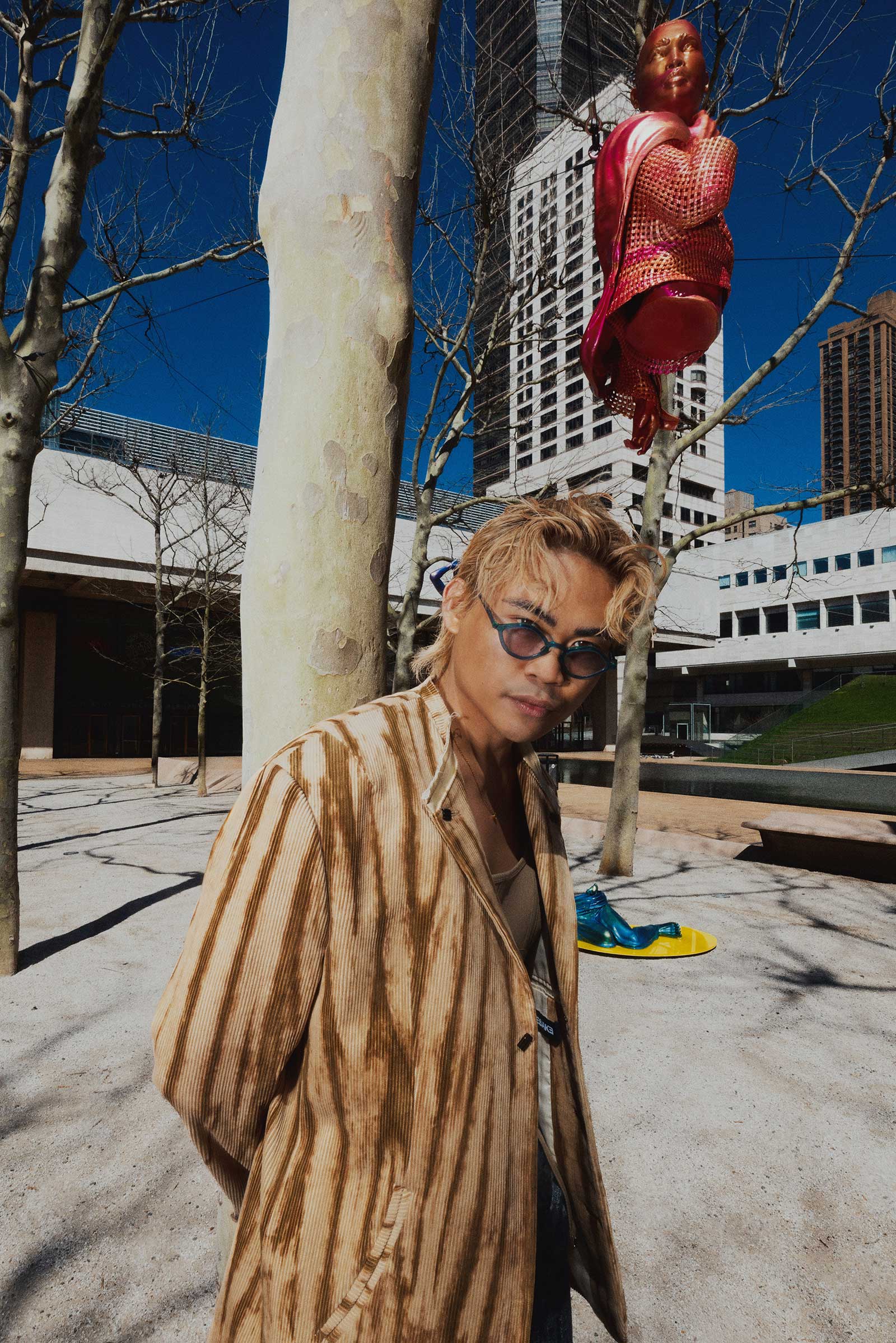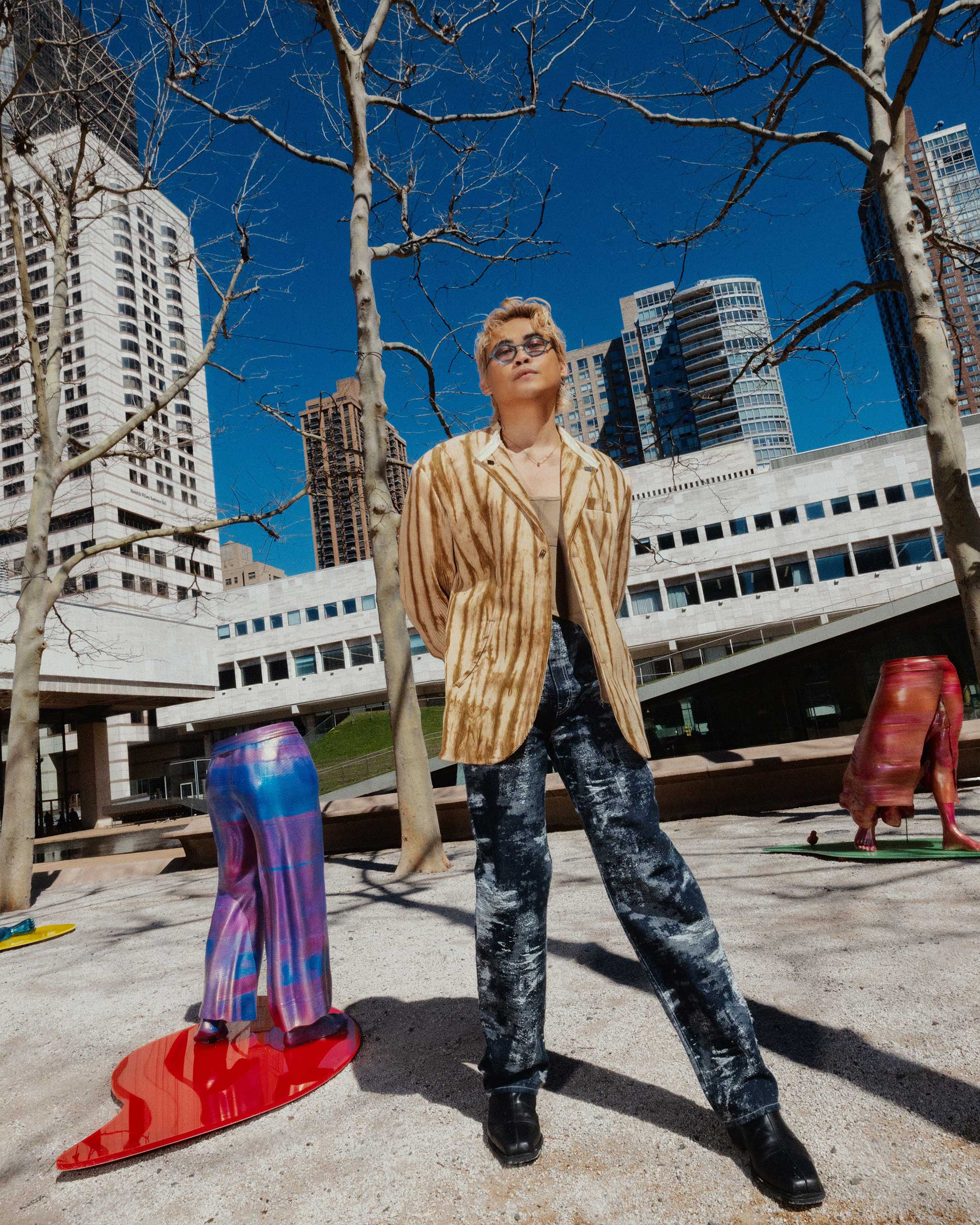Photo by Lawrence Sumulong
Using digital tools to reimagine a mythical Philippine monster, the artist Carlo Maghirang crafts the sculpture series “Ma-na-nang-gal” for the Lincoln Center in New York City.
For most Filipinos, the storied manananggal needs no introduction. The monster of local legend disguises herself as a beautiful woman in the day and transforms into a nightmarish winged creature of vampiric qualities at night. Some say she eats men. Some others caution pregnant women that her prey of choice is a fresh fetus. Most notably, a manananggal is unique in her ability to detach her upper torso from her lower half. Severed, she flies away to hunt for prey.
A manananggal may be a monster, but for the artist Carlo Maghirang, she is a muse. “I find her imagery so captivating,” he tells Vogue Philippines in New York. “She’s miraculous in that she can exist separated in half.”
Invited to create a work for the Lincoln Center, the Philippine-born and LA-based artist began reflecting on the disembodied legend as an allegory for displacement, both physical and economic. Who do we become when we separate ourselves from our land and community?
The result is a sculpture series aptly titled “Ma-na-nang-gal” which is on display at the Lincoln Center Hearst Plaza through March 31. It is part of the center’s Social Sculpture Project, an ongoing initiative that invites artists to examine how power structures are manifested in physical spaces.
“Carlo’s work is always conscious of and teasing out the political and social contexts in which it is presented,” curators Itohan Edoloyi & Mimi Lien tell Vogue Philippines. Edoloyi first met Carlo at a design workshop several years ago and sought another moment to work together. “[Mimi and I] both expressed our interest in having Carlo take part. We could not be more pleased and proud to present this work.”

“Ma-na-nang-gal” comprises six 3D printed sculptures, three lower and upper halves of a woman’s form. Generative AI was used to model faces after the artist, his mother, and grandmother with the goal of visualizing their future lineage. As a queer artist, creating a new utopian generation was Maghirang’s way of defying the end of his family line.
It’s clear how conceptual Maghirang descends into his artmaking: his process is intentional, every step is deliberate. He chose to 3D print to reflect this notion of a future that does not yet exist. 3D printing, as a prototyping tool, creates outputs that are not meant to be viewed as final products. “[A 3D printed object] is only meant to visualize the potential of something existing,” he elaborates. “That was an interesting medium for me to imagine what a possible future could look like.”
Maghirang looked to contrast the generations-old myth by applying modern production techniques like AI and 3D rendering. Through his art, he is an insistent proponent of future-forward mediums. “Maybe I’m a tech futurist, but I’m not scared of new technologies or digital processes,” he admits. He believes that it is the challenge and responsibility for culture-bearing artists to carve a space for themselves in the future and not just the past. “I want to take my history and project it into the future, so that I can see that it still exists there.”
Early in Maghirang’s career, a mentor once cautioned him, “your vision for yourself is too large for the reality you live in.” Confronted with the reality that installation art is an ambitious undertaking, Maghirang steered to the world of set design as a practical career path. Nonetheless, coordinating someone else’s vision was never a true fit and he longed to return to a place of artmaking that felt more personal.
“Ma-na-nang-gal” served as an opportunity to finally drive Maghirang’s previously dormant artistic muscles. A culmination of three years of thought making, the sculpture series formed from his desire to craft an expansive commentary on economic displacement and the labor export.
“We talk about manananggals as myth but here they are everyday people,” Maghirang says of the myth’s symbolism in his work. “They’re workers, migrants, mothers. They’re people living through the traumas of separation.” As he followed through its logical conclusion, he considered why his own family left the Philippines. It registered for him that the manananggal compounds a multitude of stories far more personal: his mother’s grief at the death of her own mother, his own familial estrangement. It’s not that these experiences make one a monster, he clarifies. Rather, being disconnected from one’s land, culture, and people is in itself quite terrifying. It was essential for Maghirang to tinge the tragedy of the labor export with a hopeful gaze into the future. Bright, joy-like hues color the sculptures to visually capture that he does not want to demonize the grief and monstrosity of history. He prefers to visualize utopia, a premonition of the future where there is reconnection with family, language, and land. “I wanted to honor these places and people that I have been severed from,” Maghirang says wistfully. Art making is a way for him to feel connected to the memory of them. The manananggal of his imagery is an awe-inspiring creature because although she thrives severed in two, she will one day be reunited. “Maybe right now we’re not connected but someday, maybe we will be.” For now, he will prototype this future utopia into existence. He is an artist that calls us to dream.
- Celebrating Art, Community, and Resilience Post-COVID: Summer for the City Returns to New York For A Second Year
- Tony Award Winner Clint Ramos On Finding His Way In The Theater World
- In Paris, Annie Leibovitz Is Inducted Into the Prestigious Académie des Beaux-Arts
- Wired to Succeed: Racso Jugarap on Becoming the First Filipino Finalist of the Loewe Craft Prize
